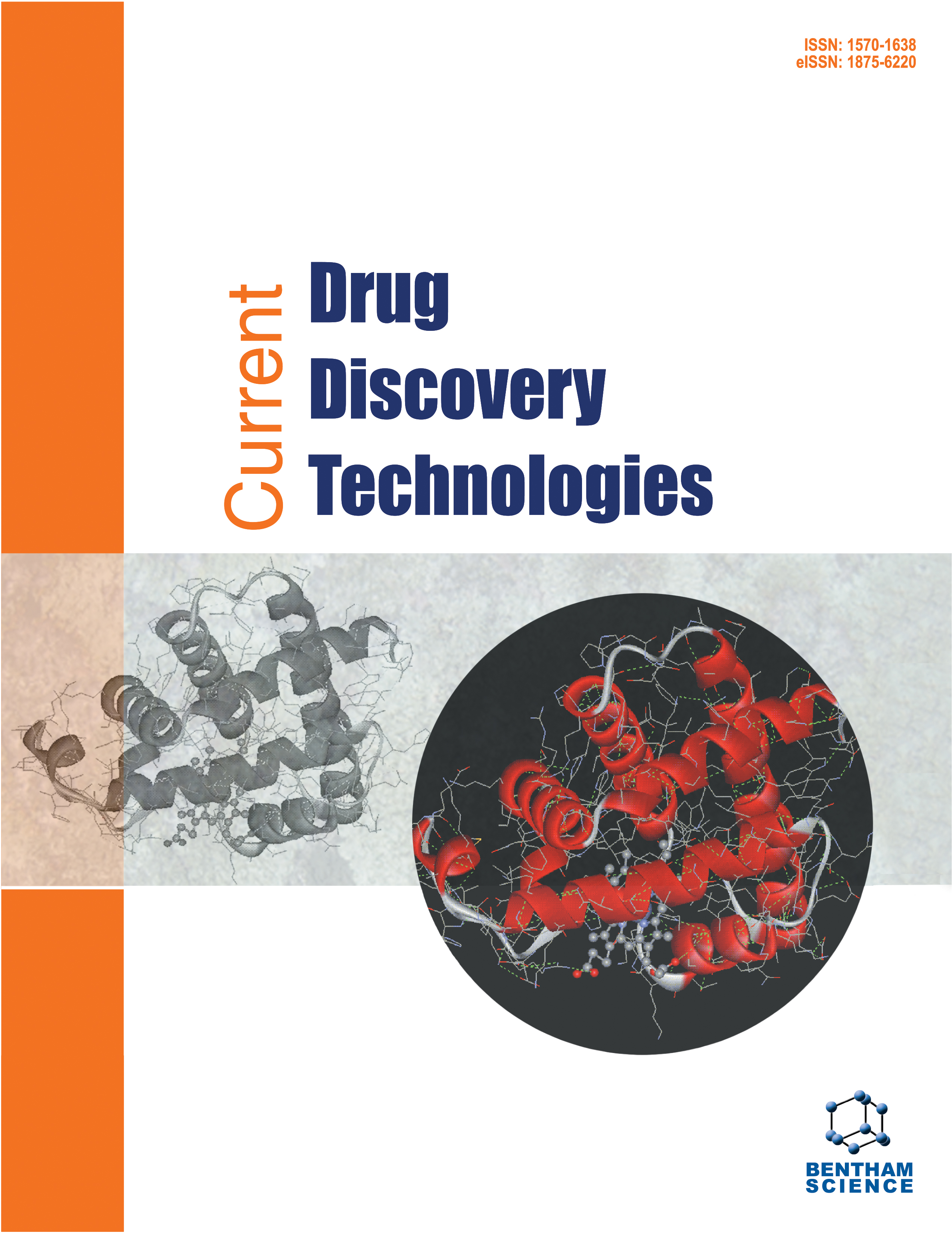- Home
- A-Z Publications
- Current Drug Discovery Technologies
- Previous Issues
- Volume 20, Issue 1, 2023
Current Drug Discovery Technologies - Volume 20, Issue 1, 2023
Volume 20, Issue 1, 2023
-
-
In silico Study of the Proteins Involved in the Persistence of Brucella spp.
More LessBackground: One of the major problems with Brucella infections is its tendency to become chronic and recurrent, providing a hindrance to the management of this infection. It has been proposed that chronicity is greatly affected by a phenomenon called persistence in bacteria. Several mechanisms are involved in bacterial persistence, including the type II toxin-antitoxin system, the SOS and oxidative and stringent respo Read More
-
-
-
Acute Toxicity Study of 5, 11-Dihydroindolo [3, 2-ß]carbazole as per OECD Regulatory Guidelines
More LessAuthors: Navyashree V. Gowda, Shailesh Bhosale and Anoop KumarBackground: 5,11-Dihydroindolo [3, 2-ß]carbazole is one of the phytoconstituent of the Arisaema genus, which might have various important biological activities. Recently, we have predicted the antiviral potential of this phytoconstituent against the Japanese Encephalitis virus (JEV). Methods: Thus, in the current study, the acute toxicity profile of 5, 11-dihydroindolo [3, 2-ß]carbazole as per OECD regulatory guidelines Read More
-
-
-
Molecular Docking and Simulation Studies of Flavanone and its Derived Compounds on PI3K-AKT Pathway Targeting against Cancer
More LessAuthors: Sagar Nagare, Kiran B. Lokhande and K. Venkateswara SwamyBackground: Flavanone compounds and their related derivatives are reported in controlling cell cycle, angiogenesis, and metastasis. Phosphoinositide 3-kinases is a major drug target. Methods: Crystalize structure of Phosphoinositide 3-kinases-Akt complex obtained from Protein Data Bank (PDBID: 3CQW) was selected as receptor protein and the binding site has been identified with PDBSum Database. Flavanone Read More
-
-
-
Systems Pharmacology and Pharmacokinetics Strategy to Decode Bioactive Ingredients and Molecular Mechanisms from Zingiber officinale as Phyto-therapeutics against Neurological Diseases
More LessBackground: The bioactive constituents from Zingiber officinale (Z. officinale) have shown a positive effect on neurodegenerative diseases like Alzheimer's disease (AD), which manifests as progressive memory loss and cognitive impairment. Objective: This study investigates the binding ability and the pharmaco-therapeutic potential of Z. officinale with AD disease targets by molecular docking and molecular dynamic (MD Read More
-
-
-
Synthesis and Biological Evaluation of Some New Chalcone Derivatives as Anti-inflammatory Agents
More LessAuthors: Zia U. Rehman, Pooja Saini and Sushil KumarAim: The present research work aims to prepare a series of 1-(4-(2-(1H-indol-1-yl)-2- oxoethoxy)phenyl)-3-phenylprop-2-en-1-one derivatives. Methods: The major compound was achieved by the reaction of indole with chloroacetylchloride in benzene afforded 2-chloro-1-(indoline-1-yl) ethanone which reacts o- hydroxy acetophenone in presence of acetonitrile to form 2-(4-acetylphenoxy)-1-(1H-indol-1-yl)ethan-1-one th Read More
-
-
-
In-Silico Designing of a Multi-Epitope Vaccine against SARS-CoV2 and Studying the Interaction of the Vaccine with Alpha, Beta, Delta and Omicron Variants of Concern
More LessAuthors: Aranya Pal, Nibedita Pyne and Santanu PaulBackground: The sudden appearance of the SARS-CoV2 virus has almost changed the future of vaccine development. There have been many different approaches to vaccination; among them, computational vaccinology in the form of multi-epitope vaccines with excellent immunological properties and minimal contamination or other adverse reactions has emerged as a promising strategy with a lot of room for further stu Read More
-
Volumes & issues
-
Volume 22 (2025)
-
Volume 21 (2024)
-
Volume 20 (2023)
-
Volume 19 (2022)
-
Volume 18 (2021)
-
Volume 17 (2020)
-
Volume 16 (2019)
-
Volume 15 (2018)
-
Volume 14 (2017)
-
Volume 13 (2016)
-
Volume 12 (2015)
-
Volume 11 (2014)
-
Volume 10 (2013)
-
Volume 9 (2012)
-
Volume 8 (2011)
-
Volume 7 (2010)
-
Volume 6 (2009)
-
Volume 5 (2008)
-
Volume 4 (2007)
-
Volume 3 (2006)
-
Volume 2 (2005)
-
Volume 1 (2004)
Most Read This Month
Article
content/journals/cddt
Journal
10
5
false
en


